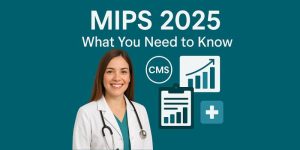Home > Blogs > Billing

Accounts Receivable (AR) is one of the most critical functions in any medical practice. If not managed effectively, would result in inefficient cash flows. Unfortunately, most medical practices are experiencing several challenges in managing AR effectively. The reasons are many - more denials, underpayments and missed or ignored claims are some of them. Reducing outstanding balances is the key to increasing your practice cash flow.
Above all, new regulatory changes such as the Patient Protection and Affordable Care Act and federal incentives have made physicians embrace electronic health records, making healthcare landscape more uncertain. Taking all these aspects into consideration, it has become even more important for practices to collect the money they owe.
So, how practices can solve their biggest AR challenges and reclaim the missing funds? One ideal way is to simplify and automate AR processes. Technologies such as electronic health record systems, patient portals, and practice management systems can help practices reduce operating costs and provide quality care. Health care practices that want to increase their collections, reduce denials and underpayments must ensure they choose a practice management system with robust capabilities that help manage accounts receivables effectively. This article illustrates how practice management system can help you overcome the most common accounts receivable challenges and allows you to track, measure, and collect receivables.
The best way for practices to improve the billing efficiency is to identify potential denials prior to submitting claims to payers so that more claims can be paid the first time itself. Adopting software that can automatically identify claims that are likely to be denied can help overcome this problem. Best solutions use an intelligent engine that automatically enforces and constantly updates the rules so as to let practices to continuously improve their collection rates. The software you choose should be able to collect data about claim denials from every practice so that you can learn why other practice claims have denied. This can help prevent similar denials happening for your practice.
The benefits of choosing billing software with rule setting capabilities include:
Normally, receivables are tracked based on 30-day increments – actions can be scheduled based on whether a receivable is 30 days old, 60 days old, and 90 days old. Payers will operate on its schedule, so two receivables with the same age would require different actions, given that they are from different payers. The challenge is to act on claims based on each payer’s individual schedule. This can’t be accomplished with manual processes, so using an automated system that allows for the daily aging of receivables is important. Automated systems can streamline collection incidents such as resubmitting a claim, creating a collection incident, sending to the collector’s queue and much more.
Tangible benefits include:
The entire revenue cycle - right from scheduling patients to collecting final reimbursement involves many steps. Manual work not only makes practices less efficient but also leaves room for costly and time-consuming mistakes. That’s why medical practices should use automated solutions to streamline their workflow.
Automated systems can respond to different events such as patient scheduling, due dates, and upcoming deadlines. This ensures that the right information is delivered to the right people, and tasks are assigned in the right way. Customized responses will be automatically generated when assigned jobs are not completed.
This helps practices to:
To make the right decisions, medical practices require access to the complete data sets. Accessing the practice information in real-time through web-based software allows you to analyze trends. Knowing billing and collection trends will figure out the areas where the practice can improve. Having a system with extensive reporting and analytics capabilities will make it possible. Automated solutions allow you to schedule reports to be created at certain intervals for analysis and generate custom reports on the fly when you need specific information. The best systems create reports in a variety of formats and automatically send them to multiple users to view, comment, and share their perspectives within the systems.
Choosing systems with extensive reporting capabilities offer several benefits such as:
Ensuring accuracy of the payments made is very important for an efficient revenue cycle management. Electronic Remittance Advice Messages (ERAs) is one standard method of reading the payments made. Choosing the electronic system that accepts ERAs allows practices to verify the payment details against payer contracts and ensures that practices are being paid as per contracts. In addition, choosing the system that post denials will make it easy to track and manage denial claims, and helps prevent more denials in the future.
This can help practices by:
Tracking collections efficiently greatly improve practice efficiency and workflow. The following are the benefits of collection tracking:
Getting a handle on your accounts receivable processes help you to overcome some of the biggest challenges your A/R department experience. Choosing the practice management system that helps you to overcome major challenges is something that can help perk up your accounts receivable operations. Effective billing management will not only save your practice money, but allows medical practices to provide the highest quality of care to patients.
You may like these too…





